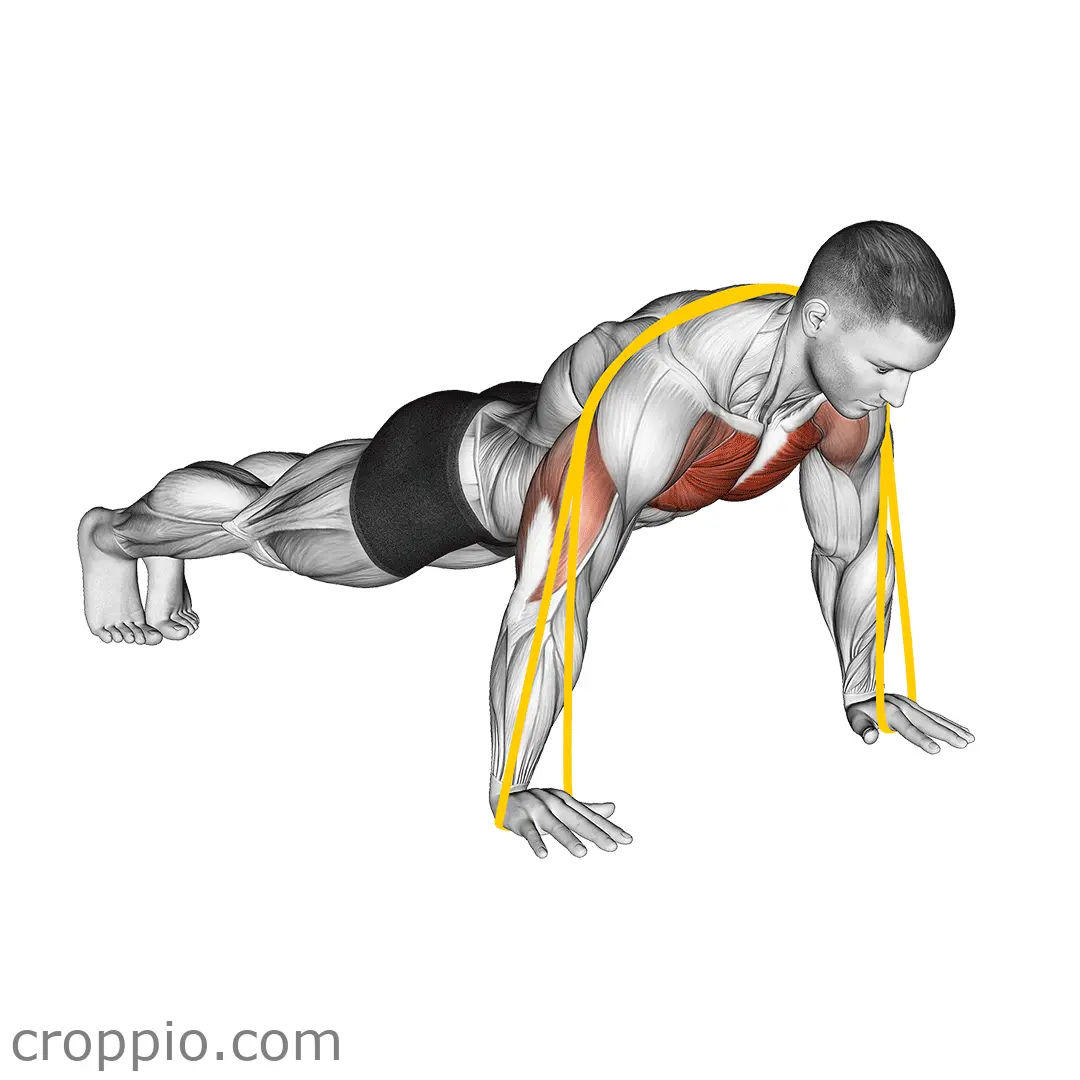Decline Push Up

Muscles Involved
The decline push-up is a dynamic bodyweight exercise primarily targeting the upper chest, shoulders, and triceps. By elevating the feet on a platform, this variation shifts the focus of the push-up from the traditional mid-chest to the upper portion of the pectoral muscles. The primary muscles involved include:
- Pectoralis Major (Upper Chest) - Engaged intensely due to the incline created by the elevated feet.
- Triceps Brachii - Works to extend the elbows as you push away from the ground.
- Deltoids - Particularly the anterior deltoids, which assist in shoulder stabilization and movement.
Secondary muscles include the core muscles for stabilization and the serratus anterior, which helps in the movement of the shoulder blades.
Top Mistakes
- Allowing Hips to Sag - This can lead to lower back strain and reduces engagement of the target muscles.
- Flaring Elbows - This not only diminishes chest activation but increases the risk of shoulder injuries.
- Insufficient Range of Motion - Not lowering the body enough robs the exercise of its effectiveness and strength benefits.
Execution Tips
To perform a decline push-up effectively, start by placing your feet on a raised surface, such as a bench or step. Your hands should be positioned slightly wider than shoulder-width apart. Here are some tips for proper form:
- Engage the Core - Keep your core tight throughout the movement to maintain a straight body line.
- Maintain a Neutral Spine - Avoid arching or rounding your back; your body should form a straight line from head to heels.
- Lower with Control - Descend slowly until your chest nearly touches the ground, then push up explosively.
Workouts
The decline push-up can be seamlessly integrated into various workout routines. It is effective when performed in a circuit or as part of a superset. Aim for:
- 3-4 sets of 8-15 repetitions for strength training.
- Integrate it with other bodyweight exercises (e.g., pull-ups, dips, or plank variations) for a comprehensive upper body workout.
- Ensure a rest period of 30-60 seconds between sets to maintain intensity and form.
Conclusion
The decline push-up is an excellent exercise that enhances upper body strength while providing a unique challenge to the traditional push-up. By focusing on the upper chest and shoulder muscles, this variation can improve muscle definition and overall upper body aesthetics. Plus, its ability to engage core stability makes it a versatile addition to any fitness routine. Regular inclusion can lead to improved push-up performance and greater upper body strength.



